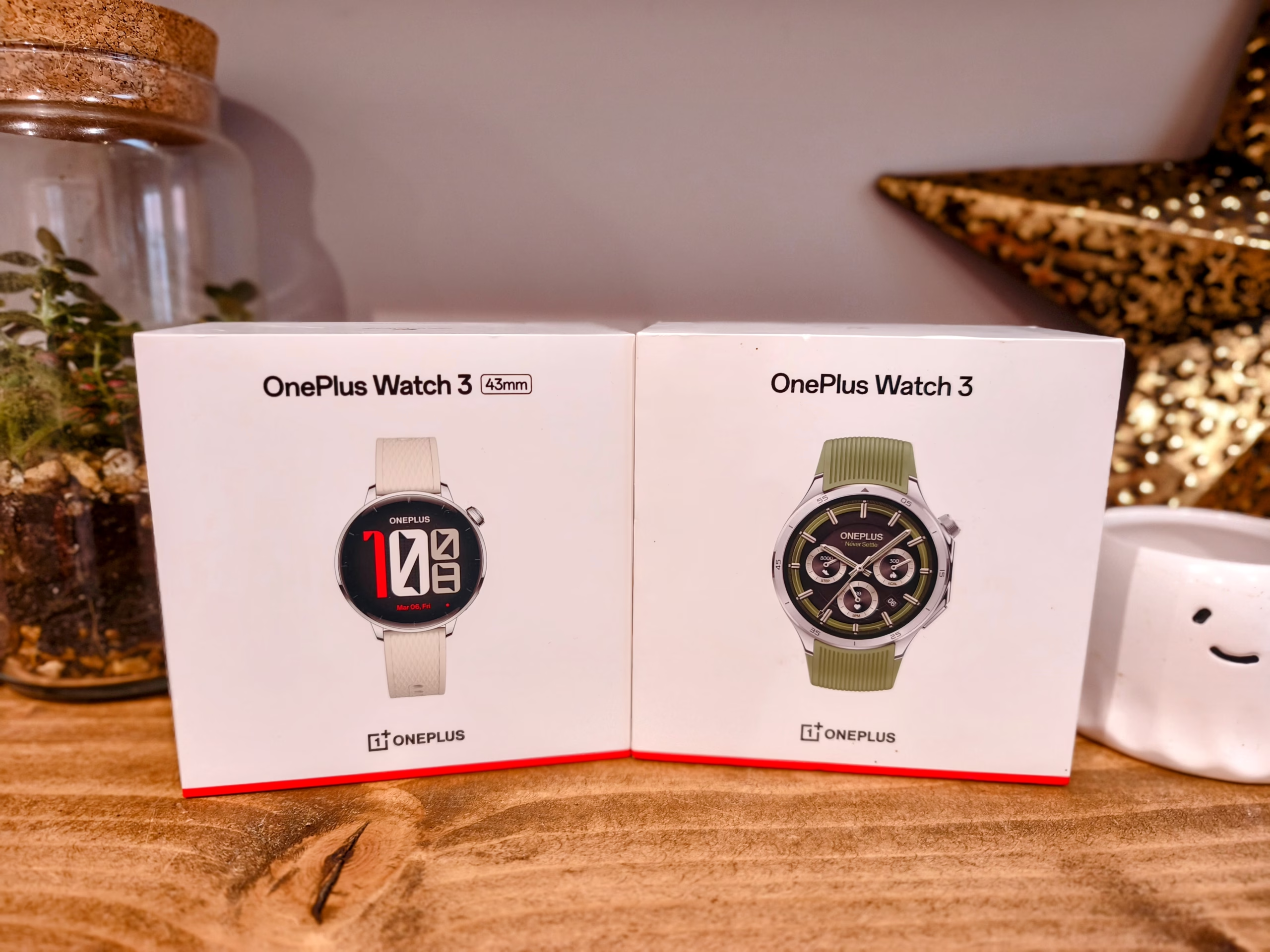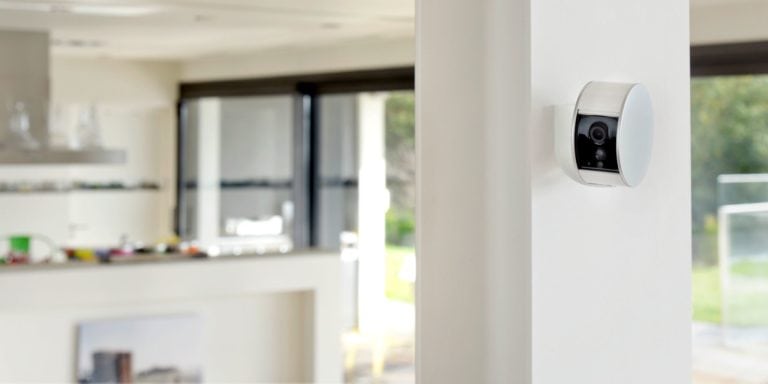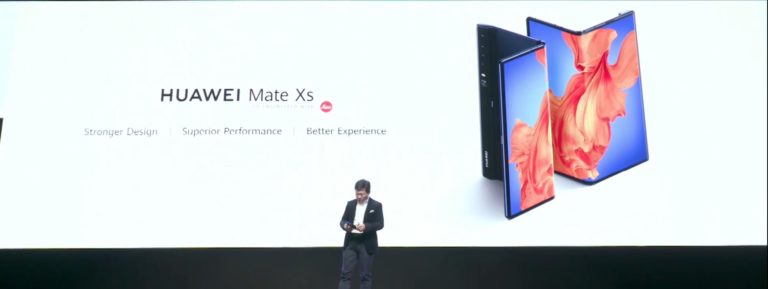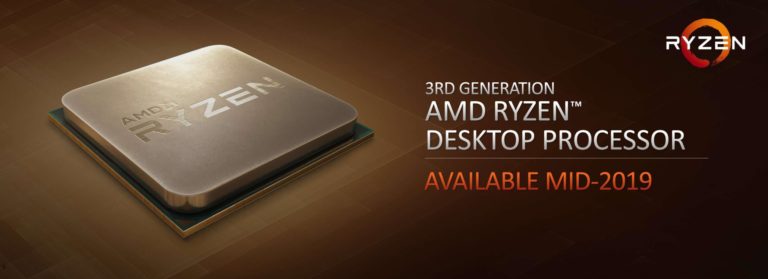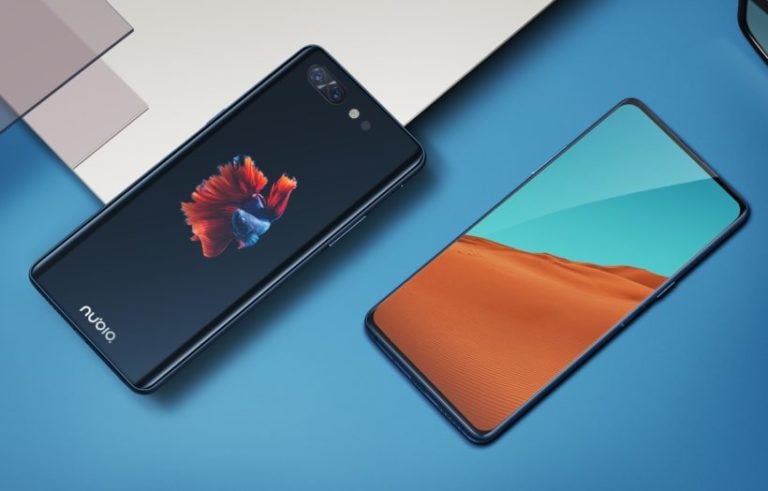Any links to online stores should be assumed to be affiliates. The company or PR agency provides all or most review samples. They have no control over my content, and I provide my honest opinion.
I have previously reviewed the OnePlus Watch 3, and it has been my favourite WearOS watch by a considerable margin. If I weren’t so deeply ingrained in the Garmin ecosystem, I would have switched to it as my personal watch and consistently recommended it to friends and colleagues.
A few months later, OnePlus launched the smaller Watch 3 43mm, which not only reduces the display size but tweaks the design, making it more elegant and feminine (for lack of a better word).
Recently, OnePlus was kind enough to send me this smaller watch to check out.
There is not much point in doing a detailed review of this, as it is functionally the same as the superb OnePlus Watch 3. I will instead focus on the differences, which include the overall appearance, battery life, and some missing features.
Related Reviews
- OnePlus Watch 3 Review
- Amazfit T-Rex 3 Multi-Sport Smart Watch Review
- Garmin Fenix 8 Review vs Epix Gen 2
- Xiaomi Watch S4 41mm Review
- Xiaomi Watch S1 Pro Initial Impression Review
- Huawei Watch Fit 2 Review
Specification
| Specification | OnePlus Watch 3 43 mm |
| Design and Material | |
| Case | Stainless steel |
| Strap | Fluoroelastomer strap |
| Wrist Size | 130 mm – 210 mm |
| Size and Weight | |
| Dimensions | Approximately 43.2 × 43.2 × 11 mm (excluding PPG sensor) |
| Weight | Approximately 37.8 g (excluding strap) |
| Display | |
| Screen Size | 1.32 inches |
| Display Type | AMOLED |
| Resolution | 466 × 466 pixels |
| Pixel Density | 352 PPI |
| Cover Glass | 2.5D Glass |
| Chip and Storage | |
| Processor | Snapdragon® W5 Gen 1 Wearable Platform |
| Microcontroller (MCU) | BES2800BP |
| Memory | 2 GB RAM + 32 GB ROM |
| Battery and Charging | |
| Battery Capacity | 354 mAh (typical), 345 mAh (rated) |
| Battery Life (Smart Mode – Standard Use) | Up to 60 hours |
| Battery Life (Smart Mode – Heavy Use) | Up to 36 hours |
| Battery Life (Power Saver Mode) | Up to 7 days |
| Fast Charging | 10 minutes charging for up to 24 hours of use; full charge in approximately 1 hour |
| Health and Wellness Features | |
| Monitoring | All-day SpO₂ tracking (with low SpO₂ alerts), all-day heart rate tracking (with high/low alerts), and respiratory rate |
| Sleep Tracking | Deep, light, REM, awake stages; sleep quality score; sleep daily report; sleep snoring risk assessment; blood oxygen during sleep; automatic sleep mode entry |
| Other Health Tools | Breathing exercises; cycle tracking; daily activity and stand reminders; fall detection; Emergency SOS |
| Insights and Apps | Vital signs analysis (limited in Europe and North America); sleep benchmark heart rate; integrated with OHealth, Google Health Connect, and Strava |
| Workouts and Fitness Tracking | |
| Professional Modes | Skiing, Running, Tennis, Badminton, Swimming, Rope Skipping, Mountain Climbing, Walking, Cycling, Elliptical, Rowing |
| Metrics (Sample) | Cadence, stride length, ground contact time, vertical amplitude, heart rate recovery, aerobic training effect, stroke count, altitude, pace, power |
| Sports Modes | Over 100 sports modes |
| Automatic Recognition | 6 types: running, walking, cycling, swimming, rowing machine, elliptical machine |
| Convenience and Smart Features | |
| Calling | Bluetooth® calling supported |
| Watch Faces | Over 100 original designs plus Google Play options |
| Mobile Payment | Google Wallet |
| Applications | Google Assistant, Google Play, Google Maps, Google Calendar, Alarm, Stopwatch, Timer, Compass, Flashlight, Battery Manager, and more |
| Phone Control | Music control and playback, camera remote control*, short video control* *Requires OxygenOS 15 or higher |
| Connectivity | |
| Bluetooth | Bluetooth® 5.2 |
| WLAN | Dual-band Wi-Fi 5G/2.4G (802.11 a/b/g/n) |
| NFC | Supported |
| Sensors | Acceleration sensor, gyroscope, optical heart rate sensor, optical pulse oximeter sensor, geomagnetic sensor, light sensor, barometer |
| Location System | Beidou, GPS, Galileo, GLONASS, QZSS |
| Durability | 5ATM water resistance; IP68 rating |
| Operating System | Wear OS by Google + RTOS |
| Device Compatibility | Android smartphones with Android 9.0 or newer and GMS version 23.45.23 or higher (iOS and Android Go not supported) |
| In the Box | Watch body ×1, Strap ×1, Charging base ×1, USB‑C charging cable ×1, Safety guide ×1, Quick start guide ×1 |
Key Differences
- The 46 mm model uses higher-end materials (titanium and sapphire) and is larger and heavier.
- The LTPO AMOLED display on the 46 mm is bigger and much brighter (up to 2200 nits).
- Battery life on the 46 mm is significantly longer, especially in power saver mode.
- The 46 mm introduces ECG, wrist temperature, and arterial stiffness health features, with MIL-STD-810H durability and multiple environmental stress tests that the 43 mm model lacks.
- Both models run Wear OS and support the same suite of smart and workout features, though the 46 mm model is a step up for health tracking and ruggedness.
Dimension Comparisons
The 43mm model is 43.2 x 43.2 x 11 mm while the 46mm model is 46.6mm x47.6mm x 11.75mm mm.
The 43mm weighs 37.8g and the 46mm model weighs 49.7g, both excluding straps.
OnePlus states that the 46mm model fits wrists measuring 140-210mm, but doesn’t list the size for the smaller model.
Design Comparison
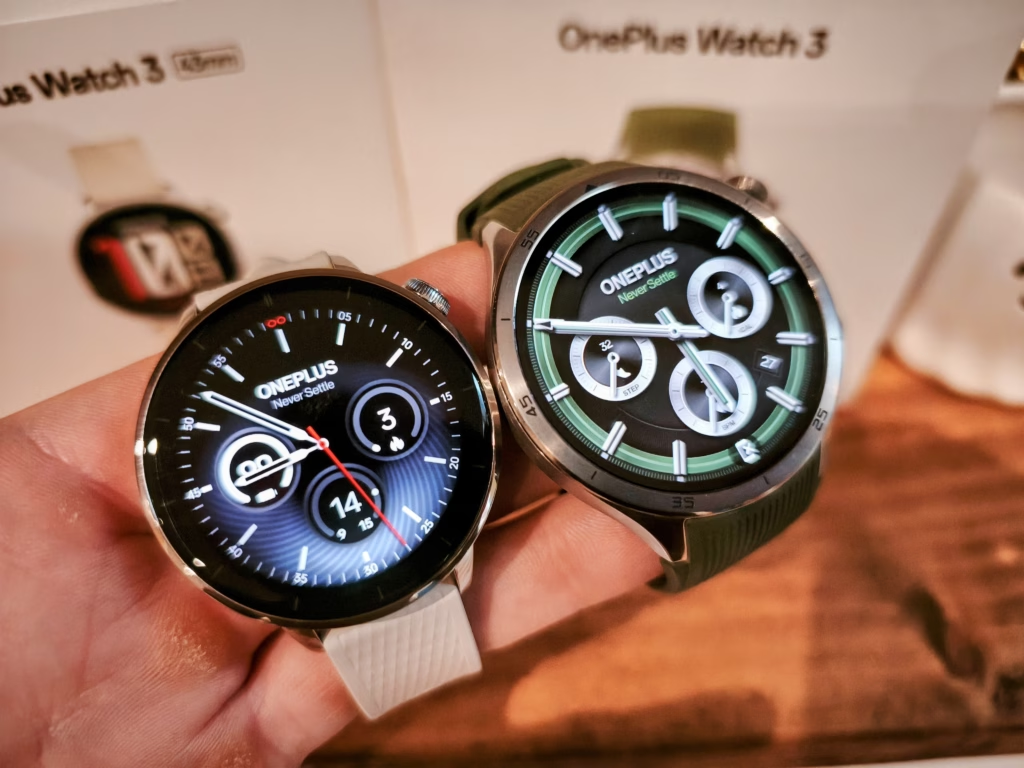
More than dimensions have been tweaked for this smaller model; the 46mm model is a chunkier and more rugged design overall, with a larger crown and number bezel giving it a bit more of a pilot watch style.
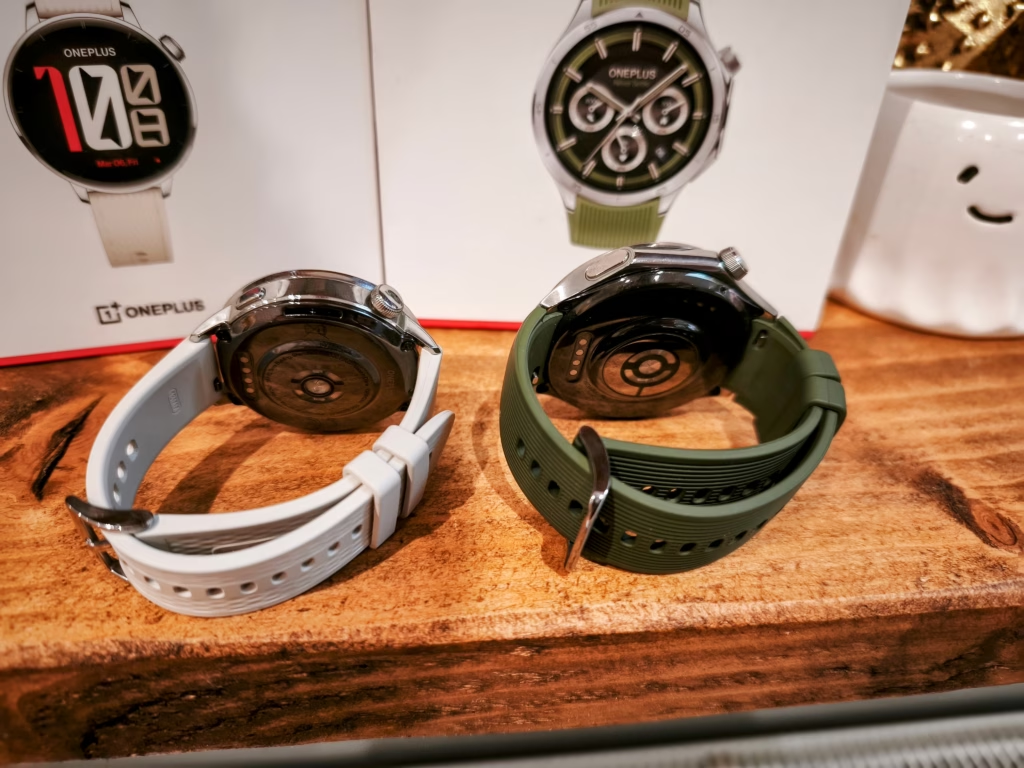
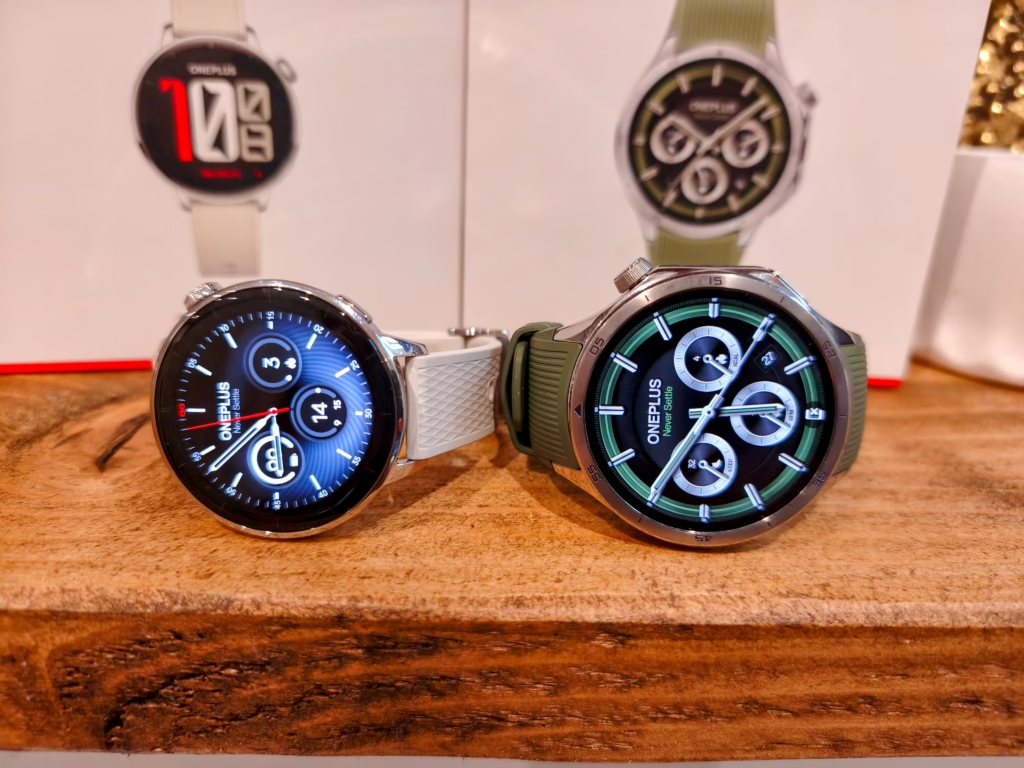
The 43mm model is more suitable but perhaps a bit more boring. It is an attractive watch, but it is basically just a circular face with a small crown. The watch strap design has changed a bit and is both thinner at 18mm and doesn’t flare out into the body of the watch, which adds to the overall impression of a smaller watch.
I have very slim wrists myself, and I never used to be fond of oversized watches, but I personally prefer the 46mm model. More than anything, I think design has a bit more character than the 43mm model.
That being said, I think they both look great, and it is all down to personal preference.
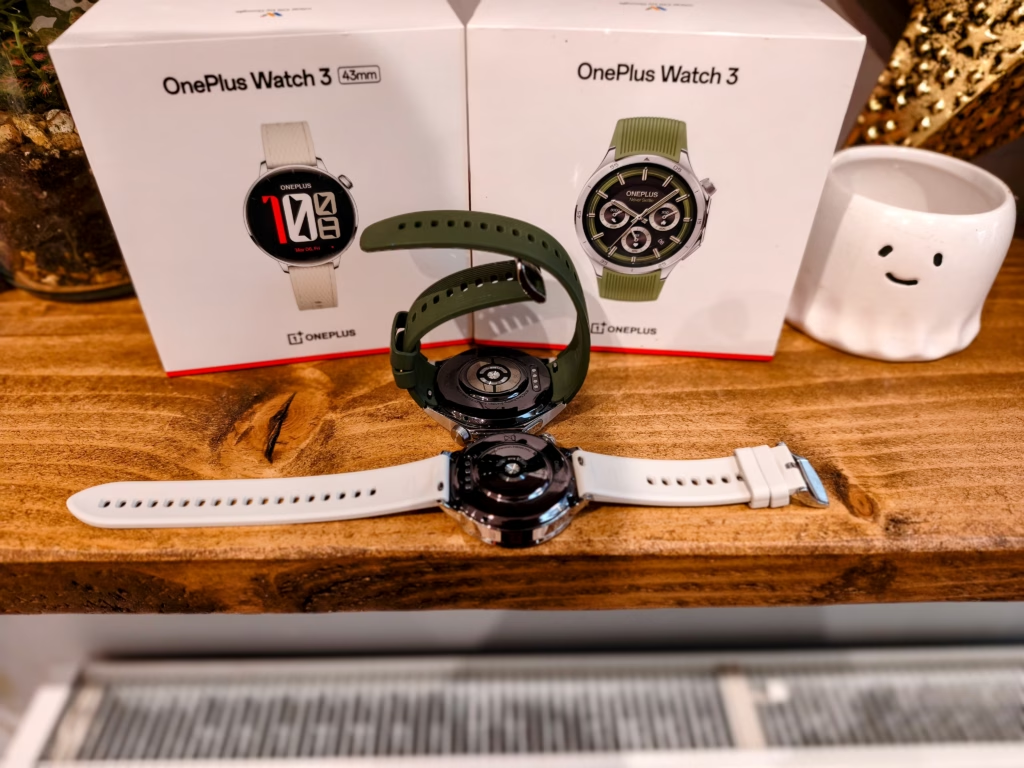
Battery Life
The battery life on the OnePlus Watch 3 43mm is superb for a WearOS watch, just not as good as the 46mm model.
The official specs indicate that the 46mm model should last 5 days with normal use or 3 days of heavy use, and from my experience, that was about right. A colleague has bought one and has been raving about the battery life, it is one of the defining features of the watch.
As you’d expect, the smaller design of the 43mm means a smaller battery and shorter life. The official specs indicate 60 hours of use, so 2.5 days, or 36 hours of heavy use. Again, this seems accurate. I might even squeeze three days of use out of mine.
Three days’ battery life is perfectly acceptable for a smartwatch, and in the past I would have classed this as outstanding, but the 46mm steals the glory.
In Use
The overall experience of this watch is mostly the same as the 46mm model, so I won’t go into much detail here.
I find it a very easy watch to get along with. It is great at fitness and health tracking, and I was very impressed that these two watches have running power, an advanced running metric that used to be reserved for premium-priced sports watches.
One omission of the 43mm model is the ECG functionality. I personally don’t mind. While it is nice to have these additional features, I always find I use them a couple of times and forget about them. Smart watches are rarely very accurate for things like this; the results are difficult to interpret, and there is not much need for a regular ECG unless you have a heart issue, and if you do, you should probably invest in a more reliable device.
Similarly, there is no wrist temperature, this is another feature I don’t use much, but it is arguably more useful for the general public, as it can potentially be an early warning sign for being ill.
Price and Alternative Options
The OnePlus Watch 3 43mm has an RRP of £269. At the time of writing on the 8th of October, the OnePlus website had it discounted to £229, and there was a £30 guaranteed trade-in option, albeit with a limited selection of watches you can trade in.
The bigger Watch 3 has an RRP of £319 and was available for £249.
Amazon has the 43mm model listed for as low as £175 for the silver model, which I have, or £182.59 for the black model, and the 46mm model for £ £199.59.
Overall
I love the 46mm OnePlus Watch 3, and the new, smaller model is mostly the same, so I, therefore, love that as well.
Obviously, the main reason why you would get this over the larger model is for the aesthetics. Whether you have smaller wrists or generally prefer the slight design difference of the 43mm model.
There are several caveats with this smaller model. While the battery life is great, I love the convenience of longer-lasting watches, and for me, this is a big factor in my buying decisions. Then, the less rugged design also has a less durable design with no Sapphire crystal cover glass and no MIL-STD-810H durability. I have had no issues with the 43mm getting scratched yet, but if you are a very active (or clumsy) person, I think it is worth considering.
Lastly, there is the lack of an ECG and wrist temperature, which I am not too fussed about, but it is still nice to have the option there.
Due to the small price difference, I’d say the 46mm model is the superior watch, providing greater bang for your buck. If you are on the fence about which model to get, I’d recommend leaning towards the 46mm model.
However, if you think the 46mm model will be too big, or don’t like its more rugged aesthetic, then I can thoroughly recommend the OnePlus Watch 3 43mm, it is an outstanding smart watch.
OnePlus Watch 3 43 mm Review vs 46mm OnePlus Watch 3
Summary
The OnePlus Watch 3 43mm is an excellent compact alternative to the 46mm model, offering the same smooth WearOS experience, strong fitness tracking, and premium feel, but in a lighter, more elegant form factor. While battery life and durability are slightly reduced, and a few health features are missing, it remains one of the best smaller WearOS watches available. If you prefer a sleeker design or have slimmer wrists, this is a superb choice, though the 46mm model still delivers better overall value.
Overall
92%-
Overall - 92%92%
Pros
Lightweight and comfortable design suitable for smaller wrists
Smooth WearOS performance with advanced fitness tracking
Strong battery life for its size (up to 60 hours)
Competitive pricing and frequent discounts
Cons
Shorter battery life compared with the 46mm model
Lacks ECG, wrist temperature, and enhanced durability features
Lower brightness and no sapphire glass compared with the larger model
I am James, a UK-based tech enthusiast and the Editor and Owner of Mighty Gadget, which I’ve proudly run since 2007. Passionate about all things technology, my expertise spans from computers and networking to mobile, wearables, and smart home devices.
As a fitness fanatic who loves running and cycling, I also have a keen interest in fitness-related technology, and I take every opportunity to cover this niche on my blog. My diverse interests allow me to bring a unique perspective to tech blogging, merging lifestyle, fitness, and the latest tech trends.
In my academic pursuits, I earned a BSc in Information Systems Design from UCLAN, before advancing my learning with a Master’s Degree in Computing. This advanced study also included Cisco CCNA accreditation, further demonstrating my commitment to understanding and staying ahead of the technology curve.
I’m proud to share that Vuelio has consistently ranked Mighty Gadget as one of the top technology blogs in the UK. With my dedication to technology and drive to share my insights, I aim to continue providing my readers with engaging and informative content.

